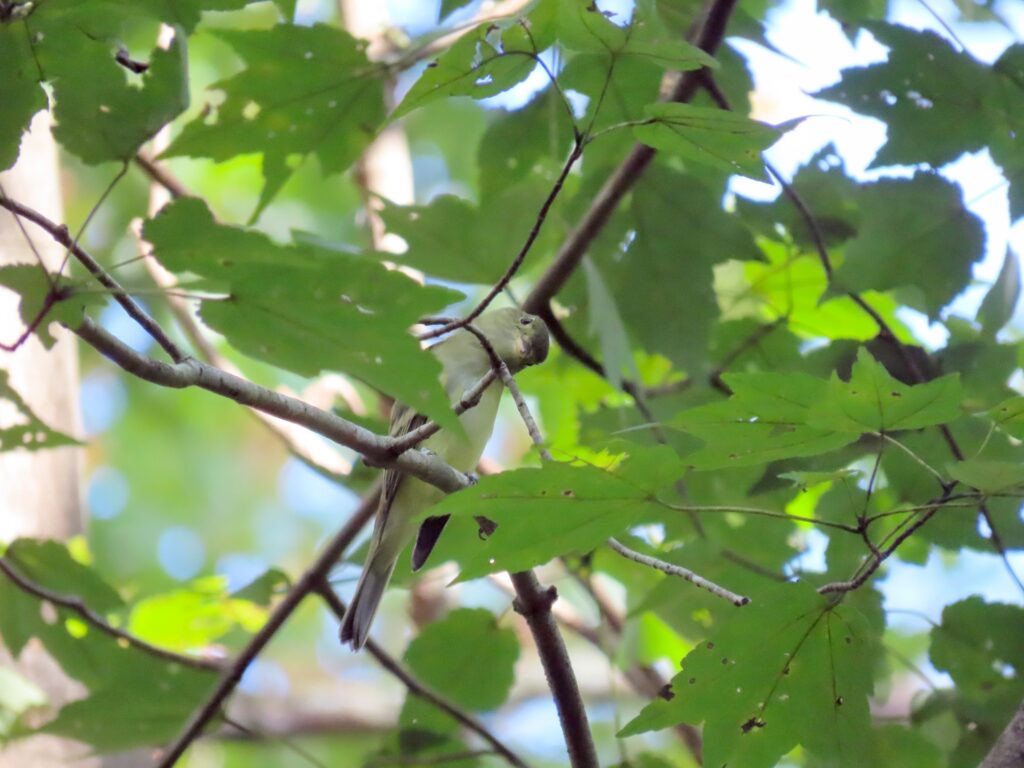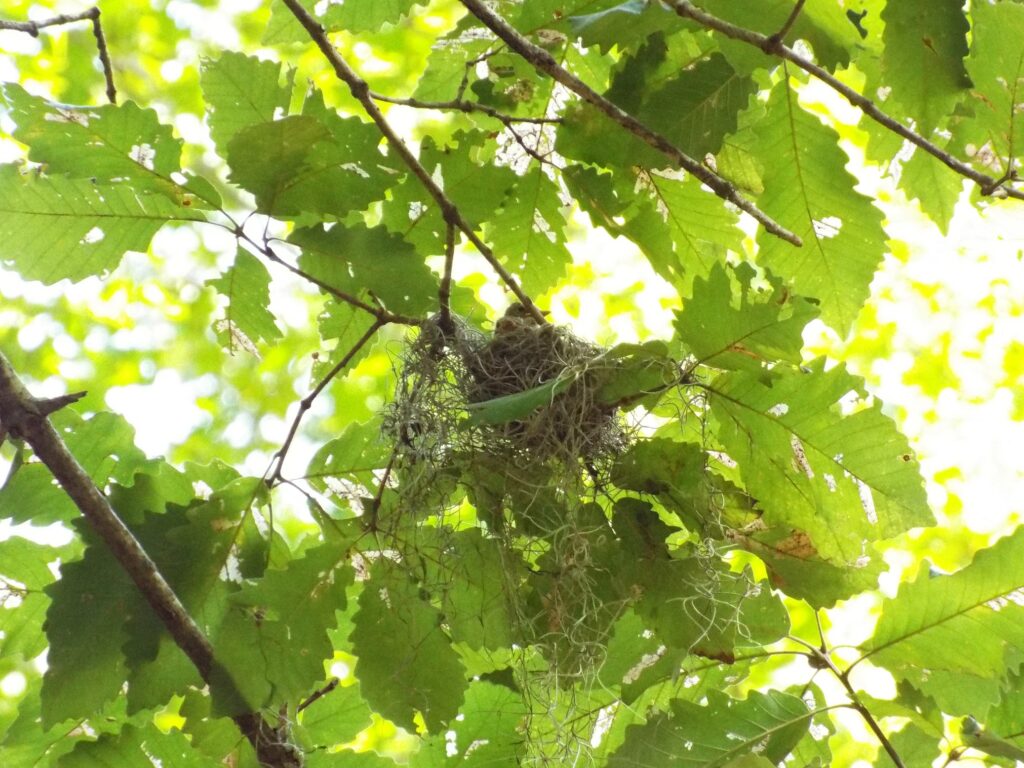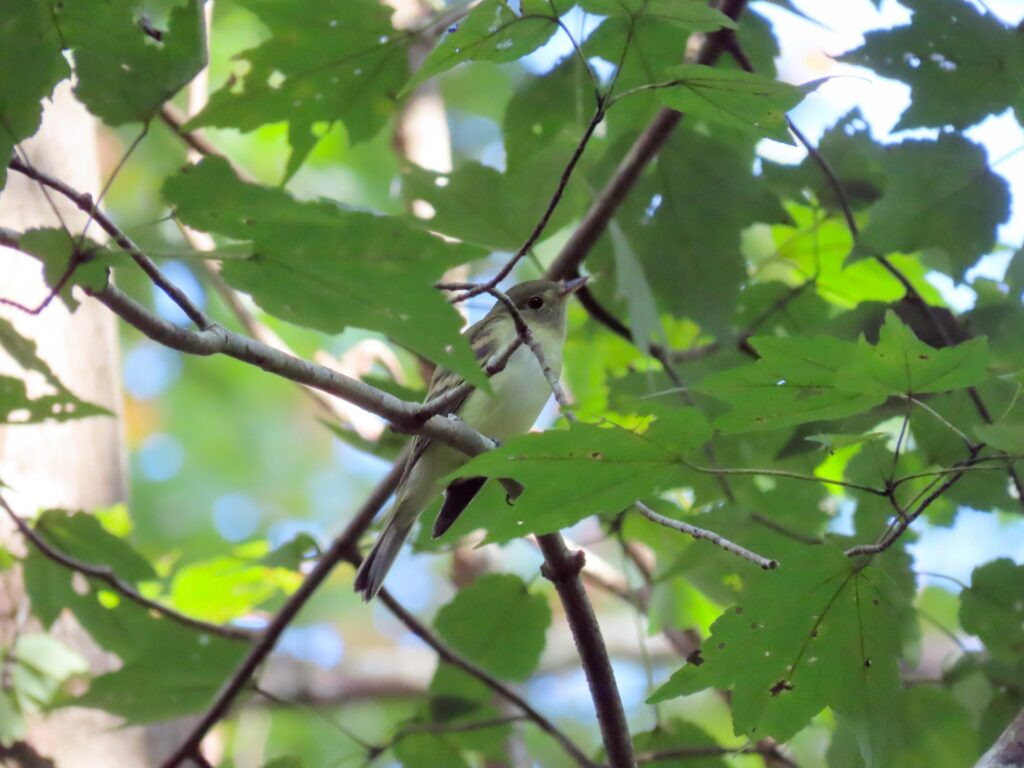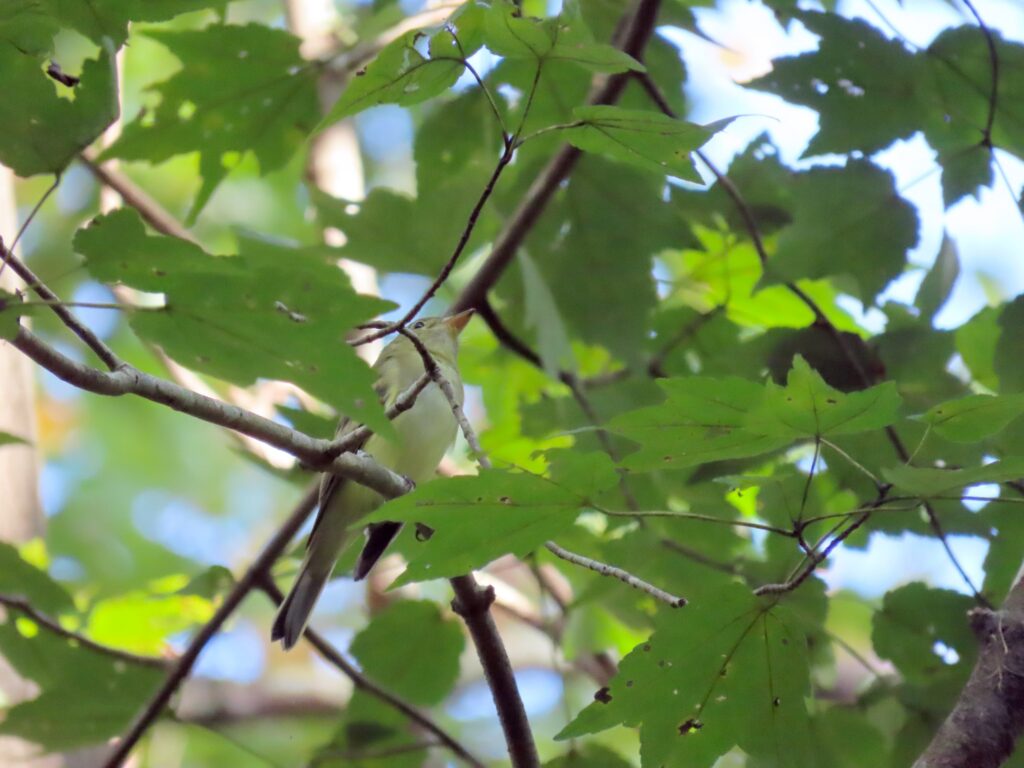




This week for Flora and Fauna Friday it’s the vocalist of the valley, the flitter over the floodplain, the Acadian Flycatcher (Empidonax virescens).
The Acadian Flycatcher can be found throughout the eastern United States in the warmer months, including all of South Carolina. They have a strong habitat preference for floodplain forests, stream valleys, river margins, bottomland fringes, and other wet deciduous forests. Most always seen in dim or dappled light, Acadian Flycatchers blend into the forest scenery, sitting perched upon a twig along a void of branches, as they twitch their head in search of prey. They subsist on a diet of primarily insects, snatched on the wing from the stagnant swamp air. Acadian Flycatchers are a mid-sized songbird with a large head and short legs. Their head and back are a dull olive-drab, their wings a grungy ebony-brown, and belly a sour greenish-white. Strongly contrasted pale wing-bars and a thin white eye-ring around a large, dark eye give them their only remarkable features in profile.
However, this feathered fashion of theirs is shared by nearly all of our other “Empid” Flycatchers in the Empidonax genus. This is a cadre of songbirds that is notoriously difficult to distinguish by eye, by both bird watchers and ornithologists alike. We see five species of Empids in South Carolina to include the Yellow-bellied Flycatcher (E. flaviventris), Willow Flycatcher (E. traillii), Alder Flycatcher (E. alnorum), and Least Flycatcher (E. minimus), in addition to the Acadian Flycatcher. Of these five, the Acadian Flycatcher is the only species that hangs around the Lowcountry throughout summer. The other four just pass through during migration and occasionally may nest in the mountainous margin of the State. Yet during migration, if you’re confronted with a mystery Flycatcher, there are still some subtle visual differences between all five. But I won’t delve into those here as we’d be here all day and, thankfully, each species has a different song. The song of the Acadian Flycatcher is a fast, two-note “flee-See!” said sharp and clear with a slight ring to it, starting flat on the first note then rising sharply in pitch through the second. It’s a divining ditty that signals the shoulder of a stream and the whereabouts of wetlands, water under the watchful eyes of a Flycatcher.